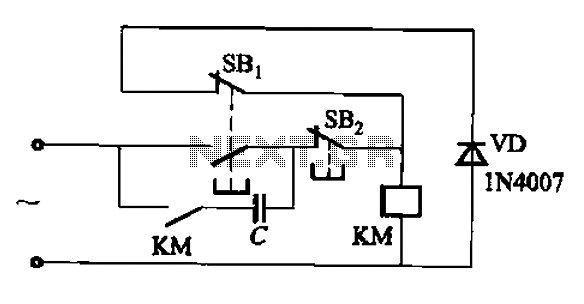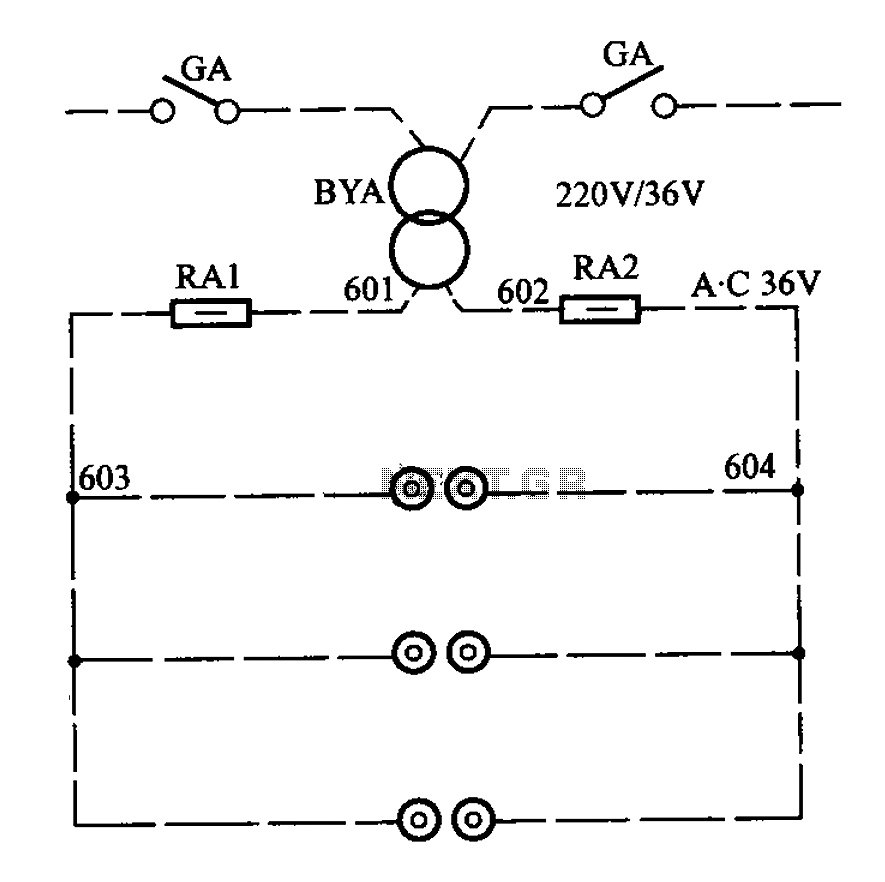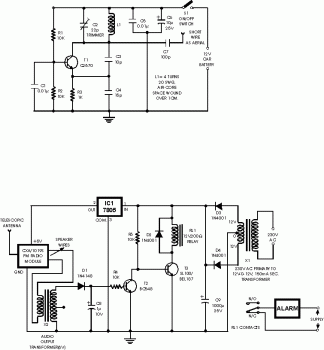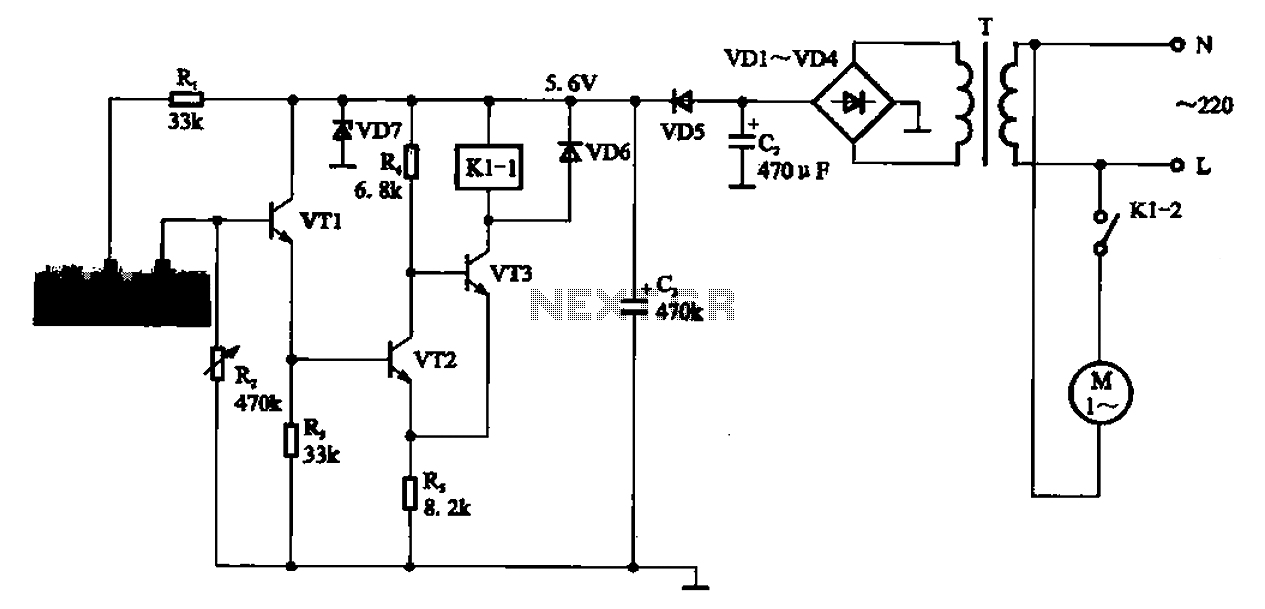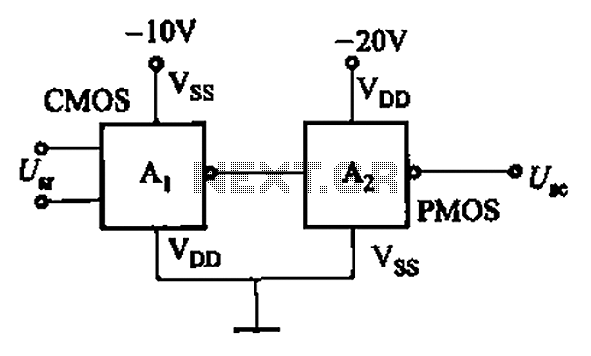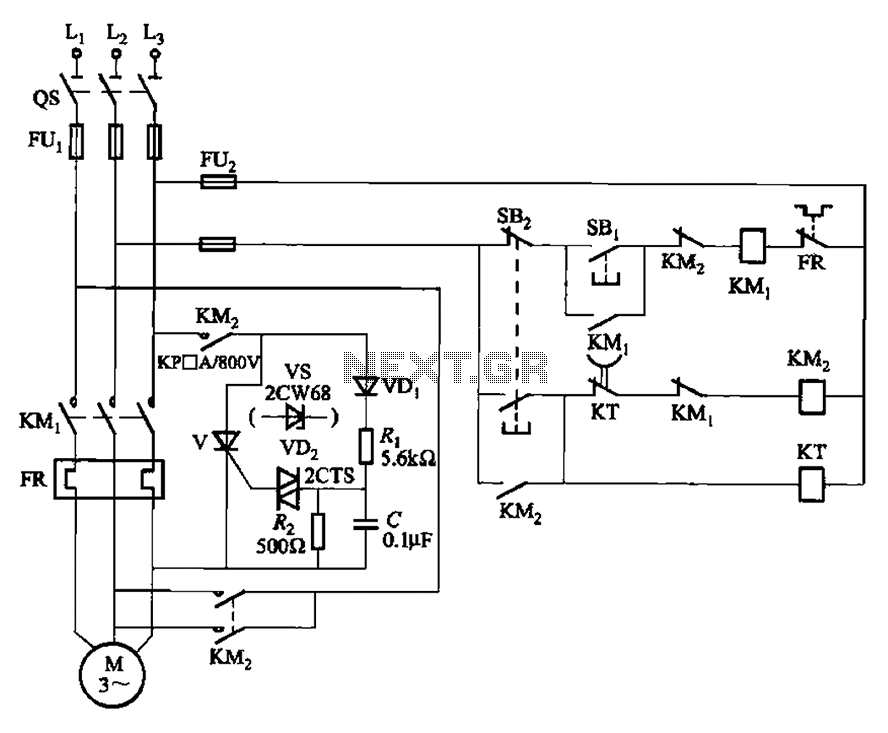
Parking call alarm circuit
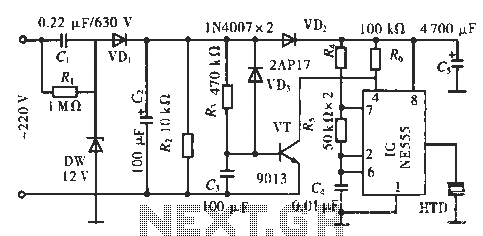
The circuit utilizes a 555 integrated circuit (IC). When an incoming call is received, 220 V AC is stepped down through resistor R1, followed by rectification using diode VD1. A voltage regulator (DW) is employed, and capacitor C2 is used to filter the output, resulting in a stable 12 V DC voltage. During an incoming call, the voltage across capacitor C3 leads to a low potential at the base of transistor VT, causing it to enter cutoff mode. Consequently, the collector of VT remains at a high potential, which maintains the reset terminal of the 555 IC (pin 4) at a high state.
The circuit is designed to respond to incoming calls by utilizing the 555 timer IC in a monostable configuration. The 555 IC is a versatile component widely used in timer, delay, pulse generation, and oscillator applications. In this setup, the circuit begins with the application of 220 V AC, which is first reduced to a lower voltage using resistor R1. This resistor acts as a current-limiting component, ensuring that the subsequent components are not subjected to excessive voltage.
The rectification process is carried out by diode VD1, converting the AC voltage to a pulsating DC voltage. Following this, the voltage regulator (DW) stabilizes the voltage to a precise 12 V DC, which is crucial for the reliable operation of the 555 IC and other components in the circuit. Capacitor C2 plays a critical role in smoothing out the rectified voltage, filtering out any ripple that may affect the performance of the circuit.
When a call is received, the voltage across capacitor C3 affects the base of transistor VT. The design ensures that the base voltage drops to a low level, causing the transistor to enter cutoff mode. In this state, the collector of VT is pulled to a high potential, which is essential for maintaining the reset terminal (pin 4) of the 555 timer in a high state. This high state on pin 4 prevents the timer from triggering and allows the circuit to maintain its current operation until the call is processed.
Overall, this circuit effectively integrates power management and signal processing to respond to incoming calls, showcasing the functionality of the 555 timer IC in conjunction with basic electronic components.Circuit works: lC is a 555 IC. Incoming calls, 220 V electricity through R1 Buck, VD1 rectifier, DW regulator, C2 filtered to give 12 V DC voltage of about. When an incoming call, VT base due to voltage on C3 non-mutation showed low potential. VT cutoff, the collector is high potential, so that the reset terminal lC 4 feet high.
The circuit is designed to respond to incoming calls by utilizing the 555 timer IC in a monostable configuration. The 555 IC is a versatile component widely used in timer, delay, pulse generation, and oscillator applications. In this setup, the circuit begins with the application of 220 V AC, which is first reduced to a lower voltage using resistor R1. This resistor acts as a current-limiting component, ensuring that the subsequent components are not subjected to excessive voltage.
The rectification process is carried out by diode VD1, converting the AC voltage to a pulsating DC voltage. Following this, the voltage regulator (DW) stabilizes the voltage to a precise 12 V DC, which is crucial for the reliable operation of the 555 IC and other components in the circuit. Capacitor C2 plays a critical role in smoothing out the rectified voltage, filtering out any ripple that may affect the performance of the circuit.
When a call is received, the voltage across capacitor C3 affects the base of transistor VT. The design ensures that the base voltage drops to a low level, causing the transistor to enter cutoff mode. In this state, the collector of VT is pulled to a high potential, which is essential for maintaining the reset terminal (pin 4) of the 555 timer in a high state. This high state on pin 4 prevents the timer from triggering and allows the circuit to maintain its current operation until the call is processed.
Overall, this circuit effectively integrates power management and signal processing to respond to incoming calls, showcasing the functionality of the 555 timer IC in conjunction with basic electronic components.Circuit works: lC is a 555 IC. Incoming calls, 220 V electricity through R1 Buck, VD1 rectifier, DW regulator, C2 filtered to give 12 V DC voltage of about. When an incoming call, VT base due to voltage on C3 non-mutation showed low potential. VT cutoff, the collector is high potential, so that the reset terminal lC 4 feet high.
